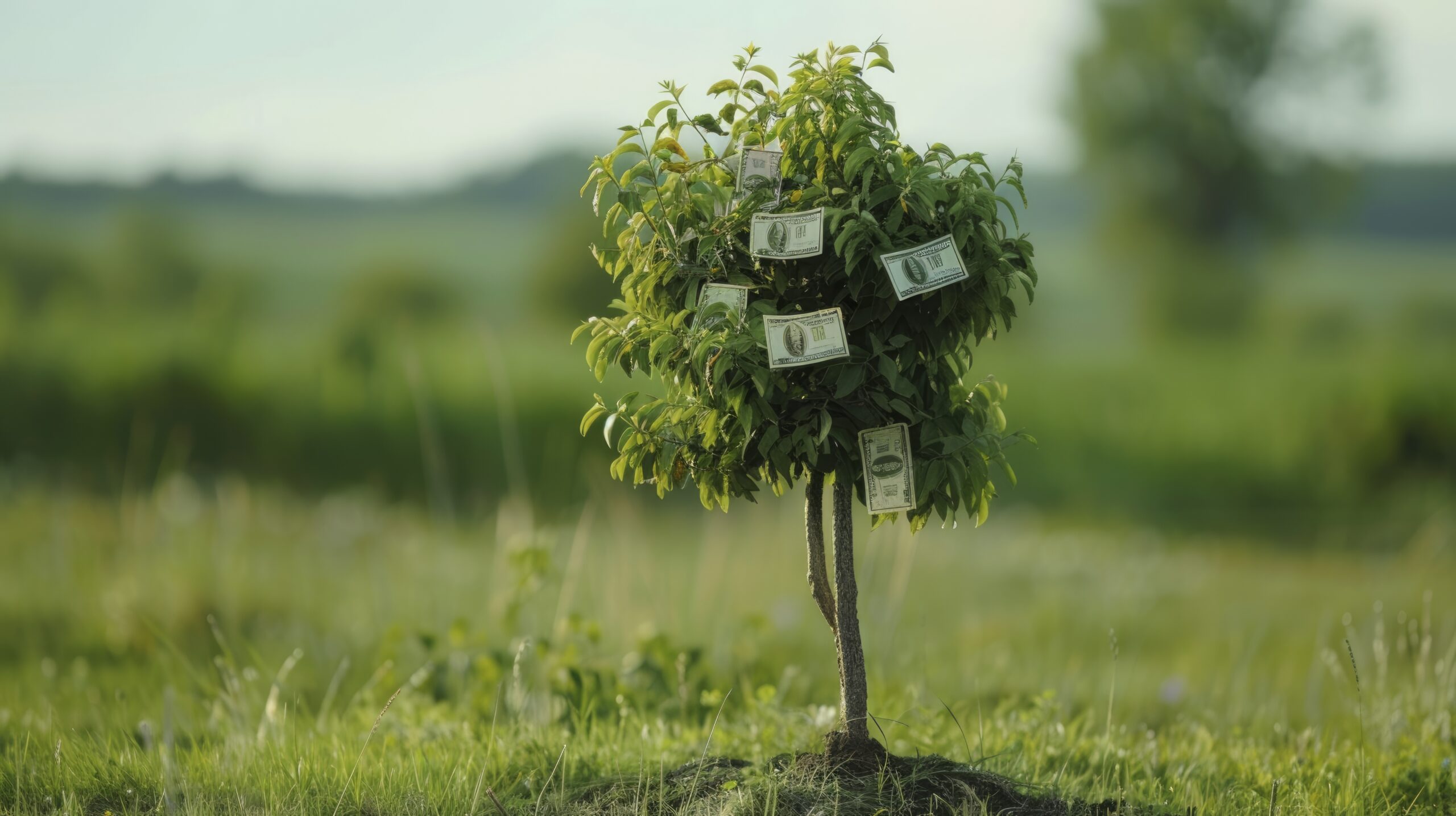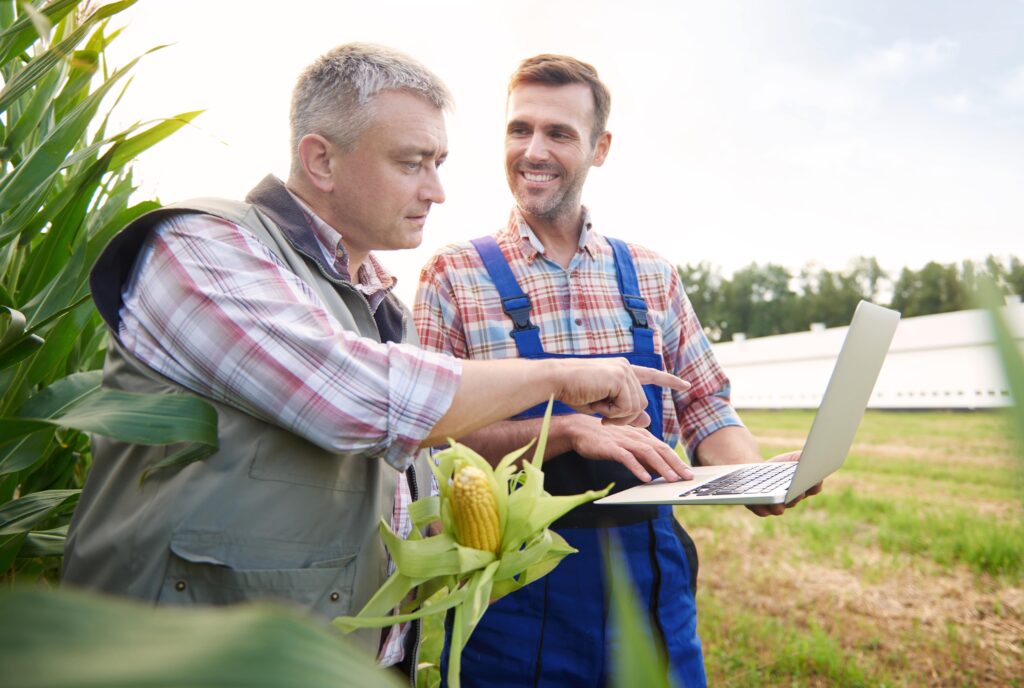How to invest in farmland for passive income?

Farmland is one of the most stable and lucrative assets for generating passive income. Unlike volatile stocks or crowded real estate markets, farmland offers steady returns through crop production, land appreciation, and leasing opportunities. With global food demand rising, investing in agricultural land can provide long-term financial security with relatively low risk.
However, getting started requires careful planning. You’ll need to understand how to evaluate land, explore financing options, and manage the property efficiently whether you’re leasing to farmers or running operations yourself. This guide breaks down the essential steps to invest in farmland wisely, helping you build a reliable source of passive income.
Why Invest in Farmland?
Farmland is often called the “hidden gem” of alternative investments stable, profitable, and resistant to economic downturns. Unlike stocks that swing wildly or rental properties that require constant maintenance, farmland offers a unique combination of passive income, long-term appreciation, and inflation protection. Here’s why savvy investors are turning to agriculture:
1. Steady Cash Flow with Low Volatility
Farmland generates income through crop sales, leasing to farmers, or government subsidies (like conservation programs). Unlike stocks, which can crash overnight, farmland produces tangible value—food. And since people always need to eat, demand remains consistent regardless of market conditions.
2. Appreciation Over Time
High-quality farmland doesn’t just provide annual income it also grows in value. As global populations increase and arable land becomes scarcer due to urbanization, the price of productive farmland has historically risen. According to the USDA, U.S. farmland values have increased nearly 4-6% annually over the past few decades, outperforming many traditional investments.
3. Inflation Hedge
When inflation spikes, the value of crops and land tends to rise with it. Farmland is a real asset, meaning it holds intrinsic value, unlike paper currency or volatile tech stocks. This makes it a powerful hedge against inflation, protecting your wealth over time.
4. Tax Advantages
Farmland investments come with tax benefits, including deductions for property taxes, depreciation, and even conservation easements. Some states offer agricultural tax exemptions, significantly lowering holding costs.
5. Diversification Away from Traditional Markets
Most investors are overexposed to stocks, bonds, and urban real estate. Farmland provides low correlation with these assets, meaning it doesn’t move in sync with Wall Street. This diversification reduces overall portfolio risk.
6. Sustainable & Ethical Investment
With growing focus on food security and sustainable agriculture, owning farmland aligns with ESG (Environmental, Social, Governance) investing. You can contribute to responsible land use while earning returns a win-win for profit and impact.
Bottom Line
Farmland isn’t just for farmers it’s a proven wealth-building tool for investors seeking passive income, inflation protection, and portfolio stability. Whether you lease the land, operate it yourself, or invest through funds, farmland offers a rare mix of security and growth potential in an unpredictable economy.
How to Choose the Right Farmland?
Not all farmland is created equal. The right parcel can generate steady income for decades, while a poor choice can become a money pit. To make a smart investment, focus on these key factors when evaluating farmland:
1. Location & Climate
- Proximity to Markets: Farmland near food distribution hubs, processing plants, or major cities often has higher demand and better leasing rates.
- Climate & Growing Season: Research regional weather patterns longer growing seasons and reliable rainfall increase productivity. Avoid areas prone to extreme droughts, floods, or unpredictable frosts.
- Local Regulations: Some states or counties have strict zoning laws, water restrictions, or environmental protections that could limit farming options.
2. Soil Quality & Land Type
- Soil Testing: Invest in a professional soil analysis to check fertility, pH levels, and drainage. Rich, loamy soil supports higher crop yields.
- Land Topography: Flat or gently rolling land is easier (and cheaper) to farm than steep hills. Avoid erosion-prone areas.
- Past Use: Land previously used for row crops (corn, soybeans) or orchards may already have irrigation and infrastructure in place.
3. Water Access & Rights
- Irrigation Availability: Does the land have wells, rivers, or access to municipal water? Reliable water sources are critical for consistent yields.
- Water Rights Laws: In some states (like California), water rights are separate from land ownership. Verify legal access to water before buying.
- Drought Resistance: Consider regions with sustainable groundwater or alternative irrigation systems (drip, pivot) to mitigate drought risks.
4. Infrastructure & Accessibility
- Roads & Transport: Is the land easily accessible for equipment and crop transport? Poor road access increases operational costs.
- Storage & Facilities: Existing barns, silos, or cold storage add value and reduce setup costs.
- Utilities: Check for electricity, internet (if managing remotely), and other essentials.
5. Local Farm Economy & Demand
- Crop Profitability: Research which crops grow best in the area and their market prices (e.g., almonds in California, soybeans in Iowa).
- Lease Demand: Areas with strong farming communities have higher tenant demand, ensuring steady rental income.
- Future Development: Avoid land near expanding cities where rezoning or rising property taxes could disrupt farming.
6. Environmental & Legal Checks
- Title & Liens: Ensure clear ownership with no legal disputes or unpaid taxes.
- Environmental Risks: Test for soil contamination, flood zones, or endangered species habitats that could restrict use.
- Mineral Rights: In some regions, mineral rights are sold separately confirm what you’re actually buying.
Red Flags to Avoid
- Poor Drainage: Soggy or waterlogged land limits crop options.
- High Input Costs: Land requiring excessive fertilizers or repairs eats into profits.
- Limited Buyer Pool: Overly specialized land (e.g., vineyards) may be hard to sell later.
Financing Your Farmland Investment

Farmland can be a lucrative investment, but the upfront cost often deters new investors. The good news? You don’t need to pay cash outright there are multiple ways to finance farmland, even if you’re starting with limited capital. Here’s a breakdown of the best financing options and how to use them strategically.
1. Traditional Farm Loans (Best for Active Farmers & Long-Term Buyers)
- USDA Farm Service Agency (FSA) Loans
- Low-interest loans (as low as ~3-5%) for first-time farmers or underserved buyers.
- Down payments as low as 5-10% (vs. 20-30% for conventional loans).
- Requires a farming plan best if you’re operating the land yourself.
- Agricultural Bank Loans
- Offered by local and regional banks familiar with farming.
- Typically require 20-30% down, strong credit (680+), and proof of income.
- Longer amortization (20-30 years) keeps payments low.
2. Seller Financing (Ideal for Negotiating Flexible Terms)
- The seller acts as the bank, offering a land contract or lease-to-own agreement.
- Benefits:
- Lower down payment (sometimes 10% or less).
- No strict bank qualifications (good for investors with weaker credit).
- Flexible interest rates and repayment schedules.
- Risk: If you default, the seller can reclaim the land.
3. Farmland Partnerships (Passive Investors Welcome)
- Joint Ventures (JVs) – Partner with an experienced farmer:
- You provide the capital; they manage operations and split profits.
- Reduces your hands-on workload while still earning income.
- Syndications – Pool money with other investors to buy larger plots.
- A sponsor manages the farm; investors receive dividends.
4. Crowdfunding & REITs (Hands-Off Farmland Investing)
- Farmland Crowdfunding (e.g., AcreTrader, FarmTogether)
- Lets you invest in shares of farmland for as little as $10,000–$25,000.
- The platform handles leasing, management, and sales.
- Farmland REITs (e.g., Gladstone Land, Farmland Partners)
- Publicly traded REITs that own and lease farmland.
- Provides liquidity (you can sell shares anytime).
5. Self-Directed IRA or 401(k) (Tax-Advantaged Farmland Investing)
- Use retirement funds to buy farmland without tax penalties.
- Income (leases, crop sales) grows tax-deferred or tax-free (Roth IRA).
- Must follow strict IRS rules (no personal use of the land).
6. Lease-to-Own or Creative Financing
- Cash Lease with Option to Buy – Rent the land first, with a portion going toward a future purchase.
- Contract for Deed – Make payments directly to the seller until the land is paid off.
Key Considerations Before Financing
✅ Interest Rates – Farm loans are often lower than commercial real estate rates (~4-7%).
✅ Loan Term – Longer terms (20+ years) improve cash flow.
✅ Down Payment – Traditional loans require 20-30%, but alternatives (FSA, seller financing) may need less.
✅ Exit Strategy – If financing is short-term (e.g., 5 years), have a plan to refinance or sell.
Which Option is Best for You?
- Hands-on farmers → FSA loans, ag bank financing.
- Passive investors → Crowdfunding, REITs, partnerships.
- Limited capital → Seller financing, lease-to-own.
Ways to Generate Passive Income from Farmland
Owning farmland doesn’t mean you have to become a full-time farmer. With the right strategy, you can turn your land into a steady source of passive income with minimal hands-on effort. Here are the most profitable approaches:
1. Cash Rent Leasing (Simplest & Most Reliable)
- How it Works: Lease your land to local farmers for a fixed annual payment (e.g., $200–$500 per acre).
- Best For: Investors who want predictable income without crop price risks.
- Pros:
- No farming expertise needed.
- Stable cash flow (leases often run 3–5 years).
- Cons:
- Lower upside compared to profit-sharing leases.
2. Crop Share Leasing (Higher Earnings Potential)
- How it Works: Split crop revenues 50/50 (or another agreed %) with the farmer instead of charging fixed rent.
- Best For: Fertile land in high-yield regions (e.g., Midwest corn/soybeans).
- Pros:
- Earn more in good harvest years.
- Farmer is incentivized to maximize production.
- Cons:
- Income fluctuates with crop prices and weather.
3. Hunting/Recreation Leases (For Marginal Farmland)
- How it Works: Lease to hunters, birdwatchers, or campers ($5–$50+ per acre annually).
- Best For: Wooded areas or less productive fields.
- Pros:
- Very low maintenance (just post “No Trespassing” signs).
- Can combine with agriculture (e.g., fall hunting after harvest).
- Cons:
- Requires liability insurance.
4. Solar Farm or Wind Lease (Long-Term High-Yield)
- How it Works: Utility companies pay $500–$2,000+/acre/year to install renewable energy systems.
- Best For: Flat, sunny/windy land near power infrastructure.
- Pros:
- 20–30 year contracts with annual inflation adjustments.
- Almost zero labor required.
- Cons:
- May restrict future agricultural use.
5. Specialty Crops & Agroforestry (Premium Returns)
- Options:
- Timber: Plant hardwoods (20–40 year investment) or fast-growing pines (10–15 years).
- Orchards/Vineyards: Lease to almond, pecan, or grape growers ($1,000+/acre in premium regions).
- Organic/Hemp: Certified organic land leases at 20–50% premiums.
- Best For: Patient investors with suitable climate/soil.
- Pros:
- Far higher income potential than row crops.
- Cons:
- Requires multi-year commitment.
Maximizing Your Farmland Income
- Stack Income Streams: Combine hunting leases with agriculture, or solar panels with sheep grazing.
- Add Value: Improve land with irrigation, fencing, or road access to command higher rents.
- Tax Benefits: Deduct property taxes, depreciation, and management expenses.
Which Strategy Fits Your Land?
- Prime cropland → Cash rent or crop share leases
- Rough/wooded acreage → Hunting leases or timber
- Flat, sunny parcels → Solar farm leasing
Conclusion
Investing in farmland offers a rare combination of stability, passive income, and long-term appreciation making it one of the most reliable alternative assets available. Whether you choose to lease to farmers, explore renewable energy opportunities, or diversify with specialty crops, farmland can generate steady cash flow while hedging against inflation and market volatility. The key to success lies in selecting the right land, securing smart financing, and choosing income strategies that match your goals and resources. By avoiding common pitfalls and leveraging expert insights, you can turn farmland into a powerful wealth-building tool that pays dividends for decades. Now that you’re equipped with the fundamentals, it’s time to take the first step toward owning your piece of the earth’s most essential asset.






